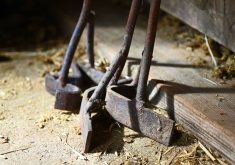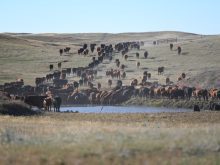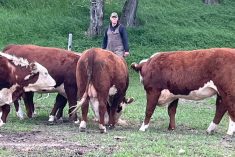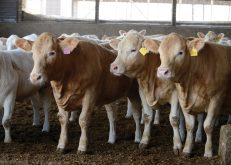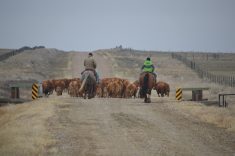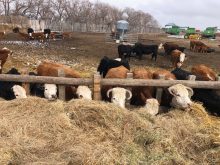More beef producers are becoming increasingly aware of the importance of low-stress livestock management as part of the time-honoured tradition of raising and handling cattle.
Human instincts, however, can present a major obstacle by contributing to a lack of control and the conflicts, anger and frustration that commonly accompany plans gone awry. Dylan Biggs, a lifelong Alberta rancher and clinician who has worked in the industry conducting livestock handling clinics across Canada and the U.S. over the past 20 years, makes it clear that learning new skills and controlling human emotions are two crucial aspects of efficient herd management.
Read Also
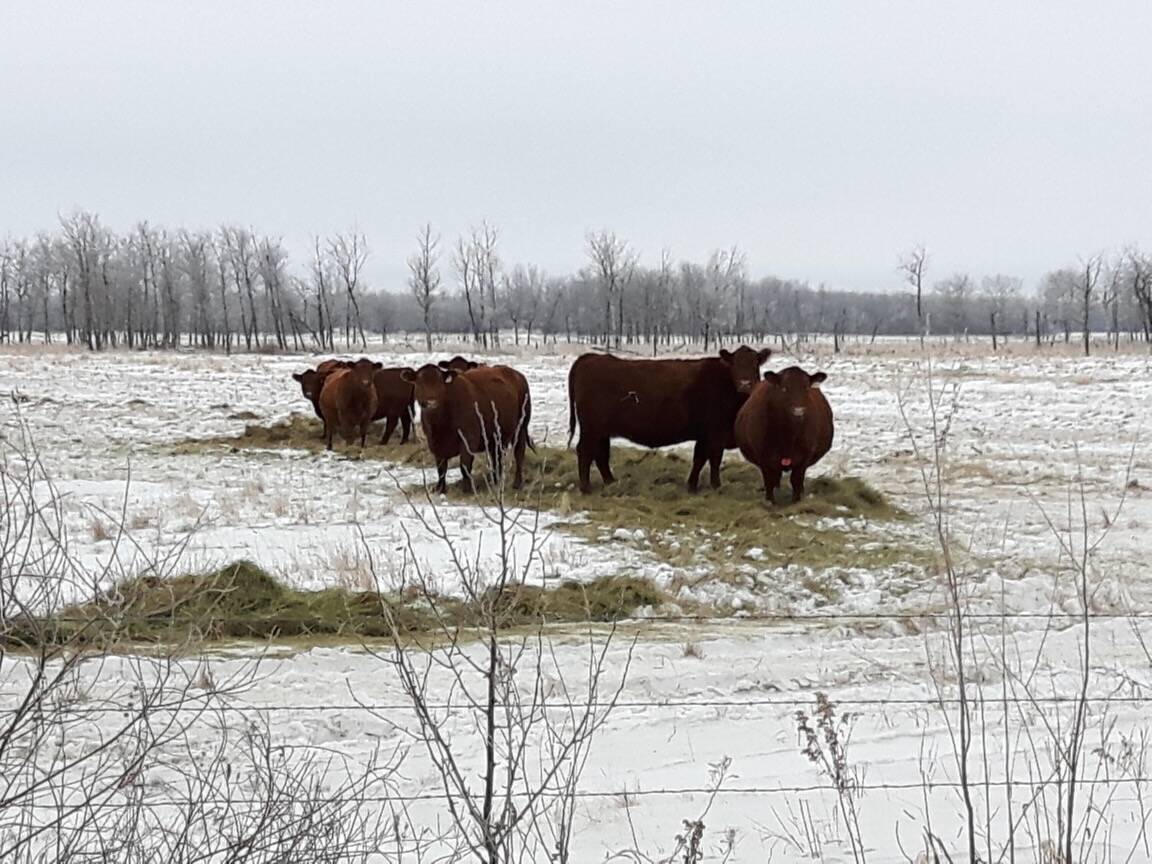
Prevent nitrate poisoning in overwintering beef cows
High-nitrate feeds can be deadly for overwintering beef cows. They can be used, but only if they’re processed and diluted in a lower nitrate ration.
In a world where many are faced with an urgency to achieve maximum efficiency, hustle is the name of the game. “The reality is that once we have control of our cattle, (through slow and steady techniques) we can achieve maximum results with the least amount of time and energy,” says Biggs. “We may feel like we are getting a lot done in a big hurry when we’re running and chasing and everything is moving fast, but the reality is that training cattle so that you have control (is highly) efficient.” When you don’t have to repair fences or stop to fix simple mistakes made in a hurry, it is more cost effective and time efficient in the long run.
Biggs and his wife Colleen and family operate the three-generation TK Ranch near Hanna, in eastern Alberta. The 10,000-acre ranch, which has received animal welfare certification, was established more than 50 years ago by Dylan’s father Thomas Biggs.
Better way to do things
Biggs believes there is a better way of handling cattle than the all-too-common story of frustration and angry outbursts. As an individual who has experienced and lived this story, Biggs says when producers gain low-stress handling skills, there is less of a need to get so frustrated and upset if or when livestock get out of control.
“I’ve been thinking about this for 25 years and I think that most of it boils down to a lack of confidence,” says Biggs. “When we feel insecure, we need to find someone to blame for our feeling a lack of control.” Such a thought pattern increases the likelihood of conflicts and creates a situation where, “The cattle are already upset and freaked out, so believing that things are going to get out of control often becomes a self-fulfilling prophesy and the situation erodes into a downward spiral.
“At my clinics I often ask, ‘Who gets yelled at? Who does the yelling’ and everybody’s hands go up. Everybody can relate. If you make it into a joke, everyone laughs, but beneath the humour, everyone knows it’s no laughing matter.”
When producers start to lose control of their cattle, it is much easier to lose control of emotions. Learning to control livestock, “solely through our movements, proximity and position” pays off, says Biggs. “Handling cattle isn’t about waving our arms, yelling or chasing. Those are all things we resort to when we run out of knowledge or options and when we have exhausted our repertoire of tools.”
Need patience
Having patience can go a long way toward changing the experience of handling cattle for all involved. “Once people get worked up and cattle are worked up, human nature makes it extremely difficult to step back, take the pressure off and let everyone relax, but that is the biggest thing,” says Biggs. “We have to learn to take the pressure off when things are going poorly. It is critical we learn the proper position when working around cattle and understand their movements.
“Typically we have a tendency to spend way too much time in an offensive position, pushing cattle and not nearly enough time being defensive. Often, when we get closer to our target, we get insecure about losing the cows and try to hedge our bets by pushing too hard. The increase in pressure makes cattle nervous and they start to pressure back on us and we want to push more. Not many of us are naturally inclined to step back, take the pressure off and let the cows think about it a little bit.”
Every time you work with your herd, you are training your animals and setting the tone for how handling will go in the future. Biggs says keeping your cool maximizes the benefits of low-stress handling.



